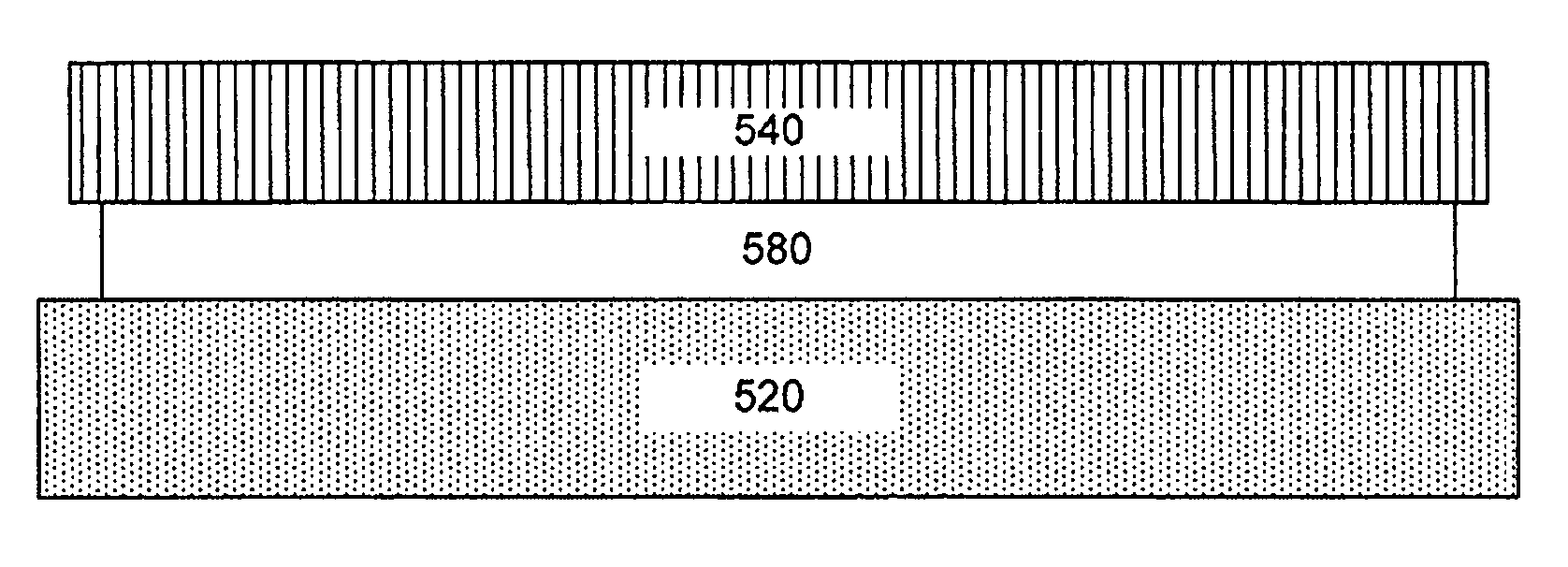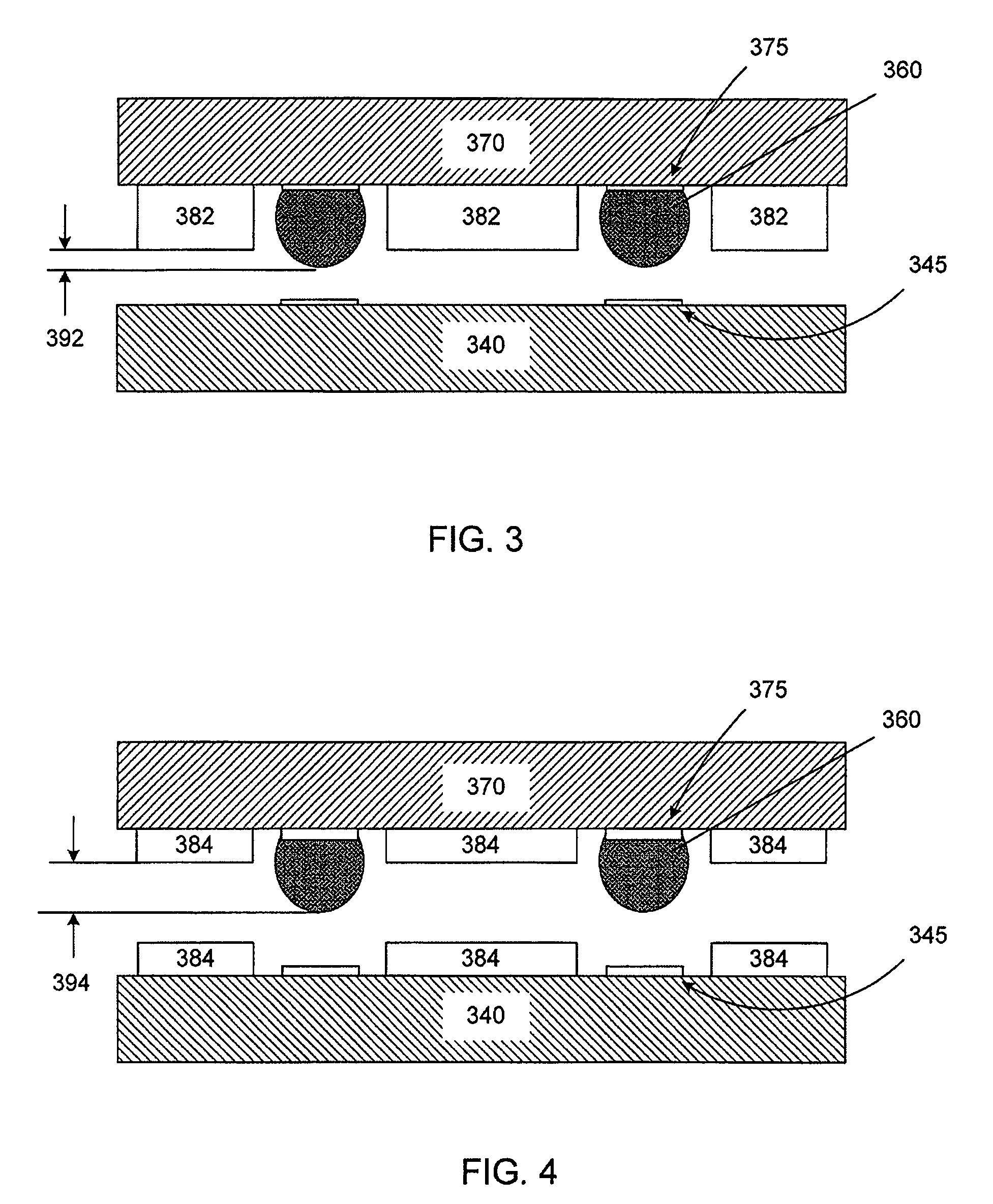Methods and materials useful for chip stacking, chip and wafer bonding
a technology of chip and wafer, applied in the direction of solid-state devices, semiconductor/solid-state device details, coatings, etc., can solve the problems of further reducing size, circuit board or module size large enough to accommodate a plurality of such packages, and affecting the performance of the devi
- Summary
- Abstract
- Description
- Claims
- Application Information
AI Technical Summary
Problems solved by technology
Method used
Image
Examples
polymer synthesis examples
Example 1
A polymer encompassing phenethyl, glycidyl methyl ether and decyl repeat units derived from phenethyl norbornene (PENB), glycidyl methyl ether norbornene (MGENB) and decyl norbornene (Decyl NB) was prepared as follows: An appropriate sized reaction vessel was dried at 110° C. for 18 hours and then transferred to a N2 purged glovebox. The vessel was then charged with: ethyl acetate (230 g), cyclohexane (230 g), PENB (14.17 g, 0.071 mol); MGENB (14.0 g, 0.100 mol) and decyl NB (39.50 g, 0.168 mol). The reaction medium was purged of oxygen by passing a stream of dry N2 through the solution for 30 minutes. After the purging was completed, 1.50 g (3.10 mmol) of bis(toluene)bis(perfluorophenyl) nickel (NiARF) dissolved in 8 ml of toluene was injected into the reactor. The reaction mixture was stirred for 18 hours at ambient temperature and then treated with a peracetic acid solution (50 molar equivalents based on the nickel catalyst—150 mmol prepared by combining 57 ml of glacial...
examples 2-4
The procedure of Example 1 was repeated using the amounts of the several monomers indicated in Table 1, below. Appropriate amounts of solvents and catalyst were also employed.
TABLE 1MonomersmolesMolecular weightComposition (1H NMR)ExDecyl NBPENBMGENBMnMwPDIDecyl NBPENBMGE NB233.65.0614.033,76284,6312.5158.310.231.60.150.0250.077335.602.3612.6337,39292,4522.4763.46.530.10.150.0120.0704071.8528.529,05361,9372.13067.132.90.360.16For Example 2, 49.2 g of dry polymer (90% conversion) was obtained; for Example 3, 44.8 g of dry polymer (89% conversion) was obtained; and for Example 4, 93.0 of dry copolymer (93% conversion) was obtained.
example 5
A polymer encompassing phenethyl, glycidyl methyl ether and decyl repeat units derived from PENB, MGENB and dodecyl norbornene (Dodecyl NB) was prepared as follows: An appropriately sized reaction vessel was charged with toluene (118.5 g), methyl ethyl ketone (MEK) (23.0 g), dodecyl NB (11.9 g; 0.045 m); MGENB (4.1 g; 0.023 m); and PENB (9.0 g; 0.045 m). The monomer solution was sparged with N2 gas for 30 minutes while stirring to remove dissolved oxygen. After the sparging, NiARF catalyst (0.845 g; 0.0018 m) dissolved in toluene (12.0 g) was then added to the reaction vessel using a cannula. The polymerization reaction was conducted at ambient temperature for 6 hours and then treated with a solution of de-ionized water (10 g), hydrogen peroxide (50.0 g) and acetic acid (25.0 g) to quench the polymerization reaction. The resulting two phase reaction mixture was stirred at ambient temperature for an additional 18 hours to remove residual catalyst. The stirring was stopped to permit p...
PUM
| Property | Measurement | Unit |
|---|---|---|
| Pressure | aaaaa | aaaaa |
| Pressure | aaaaa | aaaaa |
| Angle | aaaaa | aaaaa |
Abstract
Description
Claims
Application Information
 Login to View More
Login to View More - R&D
- Intellectual Property
- Life Sciences
- Materials
- Tech Scout
- Unparalleled Data Quality
- Higher Quality Content
- 60% Fewer Hallucinations
Browse by: Latest US Patents, China's latest patents, Technical Efficacy Thesaurus, Application Domain, Technology Topic, Popular Technical Reports.
© 2025 PatSnap. All rights reserved.Legal|Privacy policy|Modern Slavery Act Transparency Statement|Sitemap|About US| Contact US: help@patsnap.com



